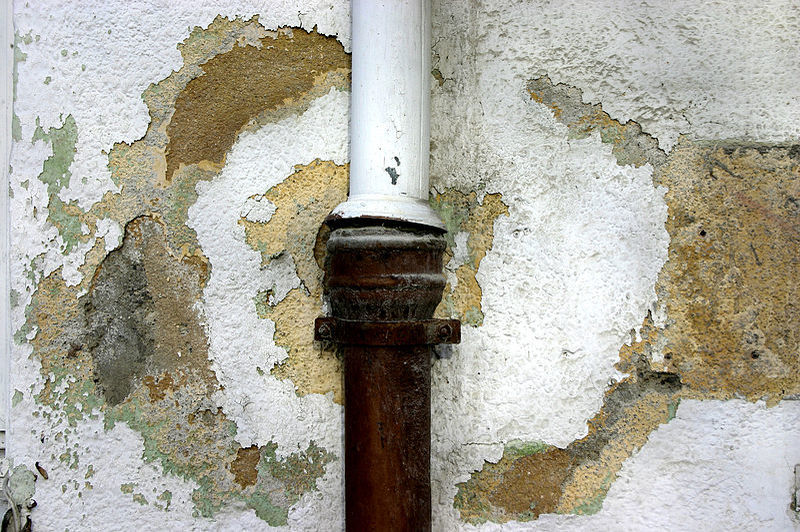Mold infestation may grow as fast as the leak but no worries, you can do a quicker search on how to remove mold from water damage. It is undeniable that molds are no fun to deal with but there are tips that will aid you in dealing with moldy drywall or blackened grout lines.

Is Mold From Water Damage Harmful?
Some people negatively react to mold when exposed to either small or huge amounts. Symptoms of which include stuffy nose, wheezing, itchy eyes or skin. Some experience the worst case scenario such as suffering from fever or difficulty in breathing.
If you happen to notice these symptoms, seek professional help as advised in the later parts of this guide. Avoiding the consequences of rookie mistakes will help you save your money for something more useful.
Lastly, you must take a mental note that molds do not usually appear in black; some come in forms of white powdery residue. However, the colors do not actually matter when it comes to the detrimental consequences of mold infestation.
How Do You Treat Mold From Water Damage?
Before anything else, you must take precautions in planning to remove mold concentrations. Consider wearing old clothes that you can easily throw after cleaning. Clad yourself as well with gloves, goggles, and N-95 masks or P-100 respirators.
To prevent air contamination, set a box fan in a window to keep the room well-ventilated during the cleanup. To ensure that spores can’t go back into the area, tape plywood or cardboard around the box. When you’re done, you can get rid of the box fan.
Tip #1. Get rid of visible mold immediately
Start the cleanup by scrubbing the surface with detergent and water. Afterwards, leave it to dry completely.
You can also begin with using a solution that contains 10% bleach and 90% water. It does not matter if you make a stronger solution as it will still lead to the same results.
Spray the solution on the surface and let it sit for 10 minutes. When the time’s over, rinse the solution off and let it dry. Mold cleanup should not be delayed because this can lead to more mold problems inside the area which also means more energy spent for removing.
Tip #2. Seal the moldy surface after cleanup
After making sure that the then-moldy area is now clean and dry, seal it with either pigment shellac or oil-based primer as a wood finish. For other types of wall surfaces, you can apply a regular latex paint that consists of a cleaning agent like mildewcide.
This step secures the area infected by molds and avoids the possibility of new mold growth. However, remind yourself that once the moisture returns, the mold buildup is probably lurking again. After which, you can replace the affected area with new ones.
Tip #3. Call in a professional help
If the mold removal sounds like a tough job for you, you can ask for the help of experts. This especially applies if you are in a situation where the mold infestation covers a large surface area, built up due to flood, or when it is present in the heating and air conditioning system.
This is also important if you are facing mold-related health problems such as asthma. Before exposing yourself to this possible health risk, check with your physician to ensure that you are safe to work out your own mold issue.
If you need a professional hand, you can schedule an appointment or in-home consultation with mold removal specialists. If you are going to take this choice, it is important that you take into consideration if these professionals adhere to the industry standards set by organizations.
Tip #4. Contact your insurance agent
If the monetary expenses make your forehead crease, ask your insurance agent if the water damage problem you are facing is included in the mentioned perils of homeowners insurance policy. Remember as well that although this may financially aid you, it still involves a coverage limit.
If the area damaged by water is your hardwood floors, you can take the initial step of claiming insurance by learning to write a water damage report about it. Floors, particularly the ones made out of wood, are known to be susceptible to water damage effects.
After ensuring everything is followed in this guide, take your time to inspect more areas of your home that might be vulnerable to mold. This is to make sure that you can only do your cleanup in one go and with no delays.
Conclusion
As much as we want to be just immersed with making our home a beaut, there are enemies that lead us to eventually learn how to remove mold from water damage. These enemies may either be in plain sight like water dripping or in sheer hiding like the molds.
Either of which, it is a good thing that no matter the size of the problem, you can always turn to a quick and easy solution with only a few taps and clicks. Here’s to no more head-scratching when battling with molds.

Hello! My basement was flooded with water for a couple of days last week due to a sudden pipe leak, and as a result there was mold on a few spots. I totally appreciate your tips on applying a shellac after getting rid of mold on a surface to avoid its reappearance. I’ll keep that in mind when I ask someone professional to perform further cleaning process later.